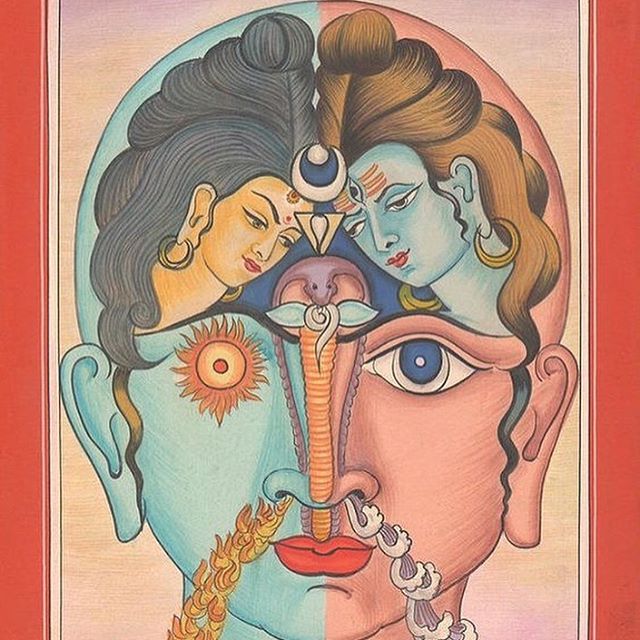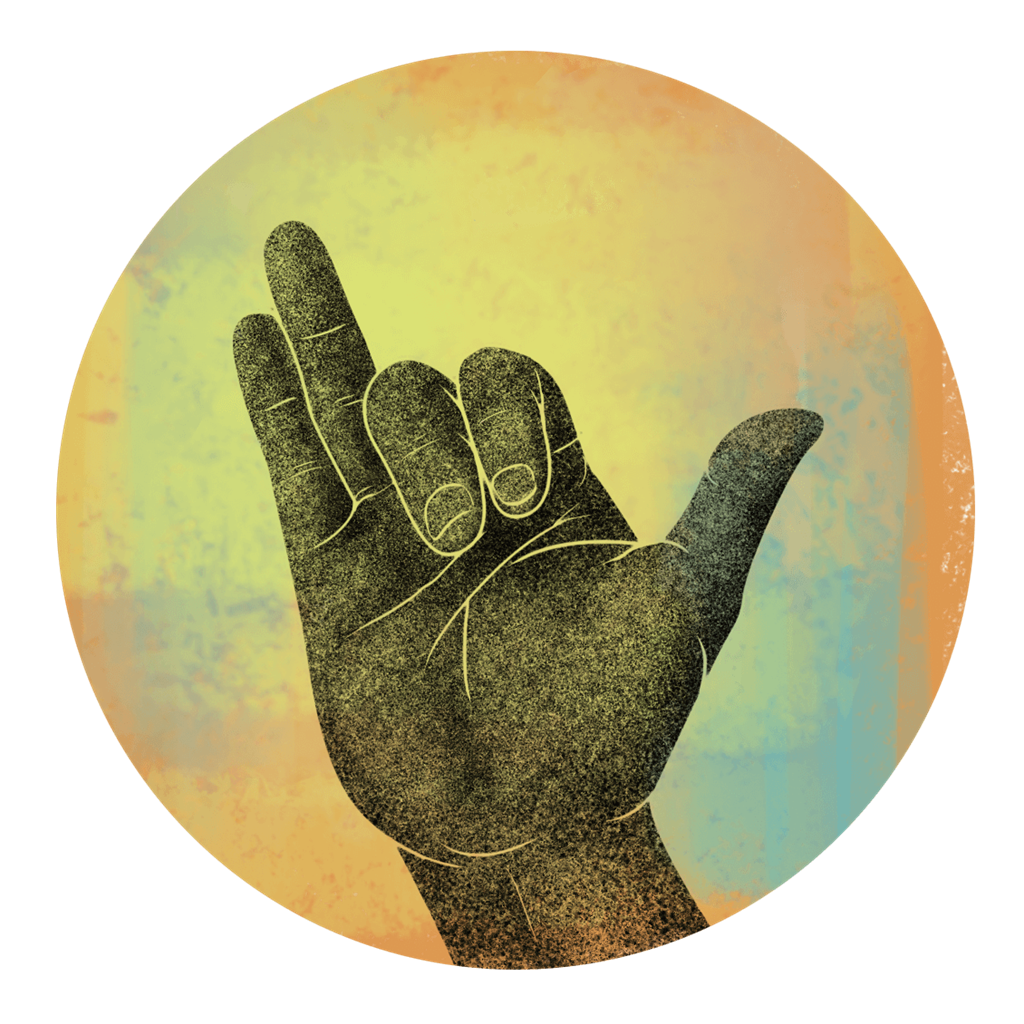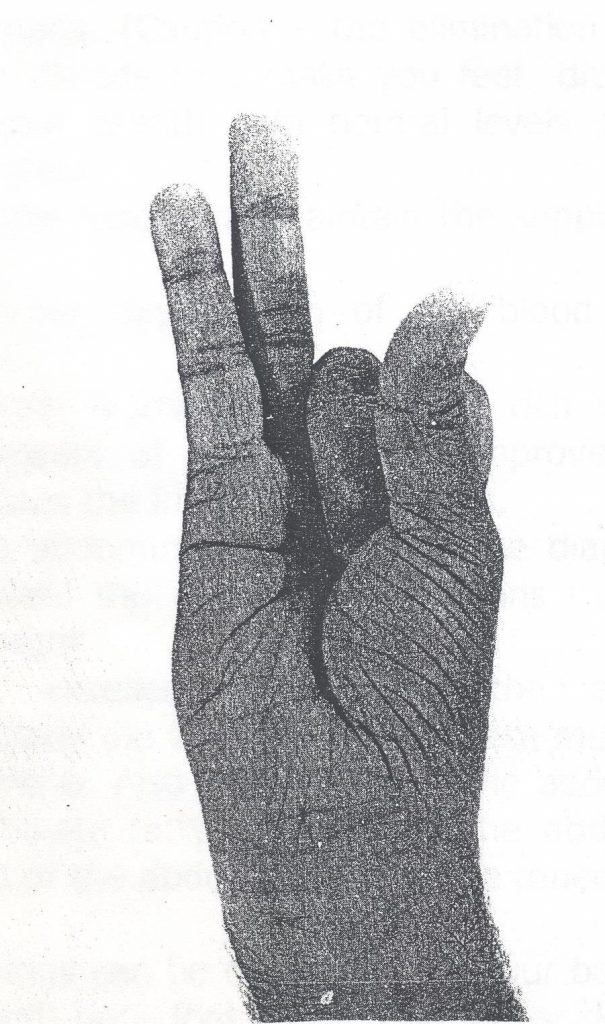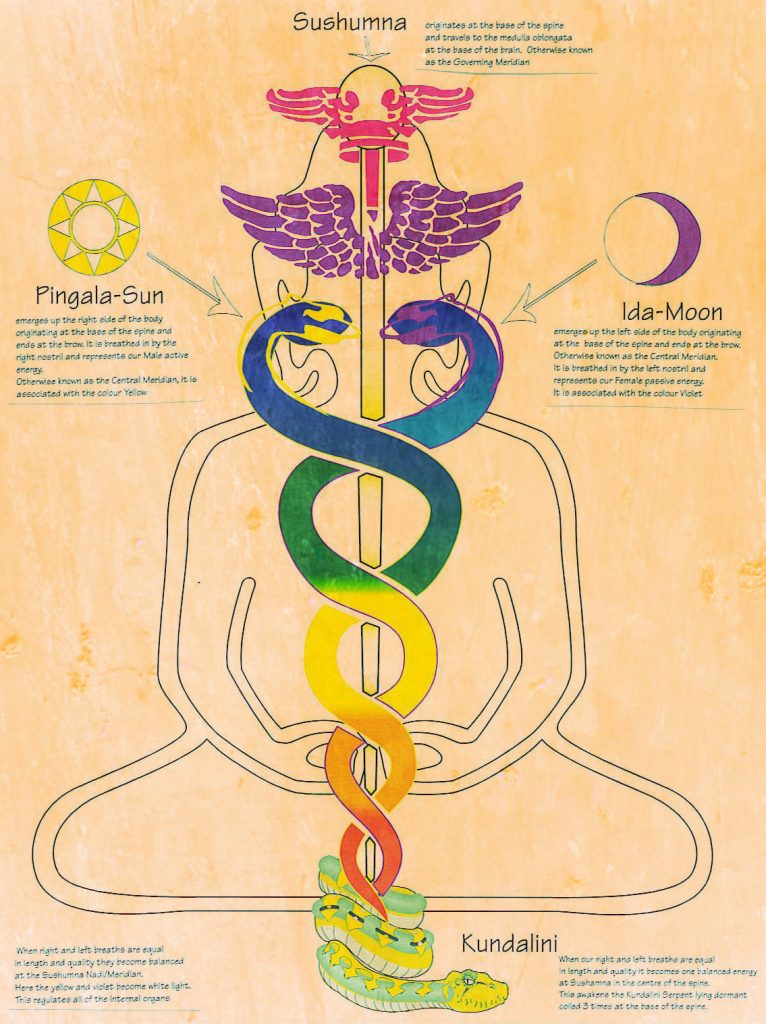Exercise 18
Chandra-bhedana pranayama
Difficulty level – 2 (moderately difficult)
Time commitment – 10 minutes, thrice a week in Week 3

This is the first cross-nostril prānāyāma that we will practice. While the prānāyāma has many levels, our attempt here is to get familiar with the process of breathing through one nostril, and observing the subtleties associated with this type of breathing.
A few basics:
- Please complete the preliminary Exercise 4 (know your breath) and Exercise 11 (Soham Meditation) before starting this exercise in Week 3. These two exercises will help bring more understanding to this practice.
- Time to practice – Ideally before sunrise or during sunset. However, for beginners, early morning or late evening (before sleeping) is fine. If possible, choose a particular time of the day, and stick to it every time.
- This is a cooling prānāyāma – do not practice it in winters.
- Practice this prānāyāma on an empty stomach, at least 3 hours after eating a light meal.
- Choose a quiet, well-ventilated place inside your house. Do not switch on the air conditioning – if you feel hot, a fan should suffice.
- While inhaling, your stomach expands (due to expansion of the diaphragm), and during exhalation, your stomach moves inward, towards your spine. You can notice (and correct) this by placing your right palm on your stomach while breathing.
- Always breathe in and breathe out slowly and steadily – no sudden rush of air in and out of your nostrils. Also, the incoming breath and outgoing breaths should be for the same duration. Visualise a calm sea shore, where the waves gently come towards the beach, and recede.
- For this exercise, the process of breathing should be as quiet as possible.
- Yoga mat – is not necessary for this practice. A rug would suffice. Not too soft though.
How you do it
Preparatory
- Sit in a comfortable position. Ideally in Sukhasana or Vajrasana. Avoid sitting on a chair. Keep your back straight. If you find this difficult, try the Vajrasana posture since the back is naturally straight in this āsana.
- Your hands can be kept loosely on your thighs, palms facing down, or if you know how to do it, in jnana mudra. Close your eyes.
- Be aware of your natural breath flowing in and out. Breathe through your nose, keep your jaw muscles relaxed, so that your teeth are not clenched or tensed.
- Now, extend the fingers of your right hand, and curl the tarjani (index finger) and madhyama (middle finger) in towards the palm of the hand and rest the tips of these fingers at the root of the thumb. The thumb and the other two fingers should be extended. This is Vishnu Mudra.


Pranayama
- Close your right nostril with the thumb, and breathe in slowly though your left nostril,feeling the air fill your lungs, your stomach pushing out gently as your diaphragm expands, and your rib-cage expanding so as to accommodate your lungs at full capacity. Ideally, count to 8 (tick-tick 1, tick-tick 2..) at a minimum in your head, to get a full inhalation. But if you find that difficult, then a 5-count is also good enough for starters.
- Now close your left nostril with your little and ring fingers, open your right nostril and exhale – as slowly as you inhaled. through your nostrils, air flowing out gently, emptying the lungs, till all the air that you inhaled, is released. The count will be the same as the inhalation (8 count or 5-count).
- This is one round. Repeat for 10-15 rounds.
At the end, join your hands together in Anjali Mudra (namaste), and feel thankful for all the blessings in your life. Genuinely thankful. Open your eyes.
Breathing
Gentle breathing, without strain or effort. Take in deep slow inhalations, with an expanded chest, and deep slow exhalations, with your stomach moving towards your spine. Your breathing should not be noisy – rather, should feel like the gentle waves of a calm ocean.
Awareness
Maintain awareness on the incoming and outgoing breath. If thoughts arise, be aware, but don’t participate. You do not need to focus or concentrate – just be aware.
Benefits
This prānāyāma helps in reducing body heat, and is helpful in controlling blood pressure. The steps described here are basic, and chandra-bhedana prānāyāma has more advanced stages, that will have to be performed to derive all the benefits of this powerful technique.
Breathing – the key to your emotions
Chandra means the Moon, and bhedana means passing through. In this prānāyāma, the left nostril is used for inhalation and right nostril is used for exhalation. It is said that on inhalation, energy passes through Ida (Chandra) Nadi and on exhalation through Pingala or Surya Nadi.
The word “nadi” is often mistaken – it is not a nerve. In Yoga, it means an energy channel though which prānā flows.

While there are thought to be 72,000 nadis though our body, the three main ones are इडा – ida (comfort), पिङ्गल – piṅgala (solar) and सुषुम्णा – sushumna (kind).
Ida is the feminine – the creative, the cooling aspect of our personality. The Chandra-bhedana prānāyāma activates the ida nadi, and it’s counterpart, the surya-bhedana prānāyāma activates the pingala nadi.
If you recall, I had spoken of Swara Yoga earlier. Swara means ‘the sound of one’s own breath’, and yoga means union. Swara yoga thus enables the state of union to be reached by the means of one’s own breath. You may also recall me saying that most of the time, we breathe from one nostril only. We will have a separate exercise to measure this phenomenon, and work on improving both the quality of our breath and it’s rhythm.
The ida and pingala are central to this practice of Swara Yoga, and we start by recognising these pathways, strengthening them, and switching the flow of breath from one nostril to another.
The tantric concept of Shiva/Shakti, the twin forces existing within each individual, can be seen in the structure of the brain and pranic body in terms of ida and pingala. It certainly substantiates the idea of a person having two minds, one positive and the other negative, and even the theory that there is a male and female side in everyone. The concept of “ying and yang” was extrapolated from this school of thought.
Since this is a preparatory course, we will just get introduced to such concepts. As we delve deeper, we will speak more about swara yoga and how something as simple as your breath, can end up changing the way you live, love and experience life!
अपाने जुह्वति प्राणं प्राणेऽपानं तथापरे ।
प्राणापानगती रुद्ध्वा प्राणायामपरायणाः ।
apāne juhvati prāṇaṁ prāṇe ’pānaṁ tathāpare
prāṇāpāna-gatī ruddhvā prāṇāyāma-parāyaṇāḥ
And there are even others who are inclined to the process of breath restraint to remain in trance, and they practice stopping the movement of the outgoing breath into the incoming, and incoming breath into the outgoing, and thus at last remain in trance, stopping all breathing.
Bhagavad Gīta
दह्यन्ते ध्मायमानानां धातूनां हि यथा मलाः ।
तथेन्द्रियाणां दह्यन्ते दोषाः प्राणस्य निग्रहात् ॥ ७१ ॥
dahyante dhmāyamānānāṃ dhātūnāṃ hi yathā malāḥ |
tathendriyāṇāṃ dahyante doṣāḥ prāṇasya nigrahāt || 71 ||
Just as the impurities of metallic ores are consumed when they are blasted, even so are the taints of the senses consumed through the suspension of breath.
Manusmiriti 6.71
